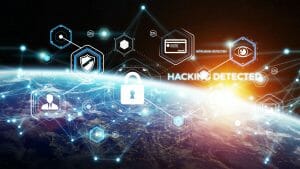Self-driving cars, drones, robots, biometric identification, and 3D printing are just a few of the recent technological advancements to hit the news. With the successful launch and landing of Elon Musk’s Falcon Heavy rocket back in February 2018, SpaceX has become a game-changer in aeronautics.
Unfortunately, cybercriminals can also get hold of both existing and new technologies, as they develop new ways to penetrate most systems. Governments and businesses are in dire need of securing their sensitive data.

Global Case Studies
In 2018, hackers used the source code of Monero to infect thousands of websites. Monero is a popular cryptocurrency that mines artificial digital coins. A popular software tool for the visually impaired, Browsealoud, had the malicious code installed, which affected government sites, including the US court system, the UK National Health Service, and the Queensland government.
In 2013, a DDoS Attack hit several Dutch government websites, which affected the Netherlands’ DigiD system. This system allows citizens to access municipal services using digital identification. Through this attack, 10 million people were prevented from paying bills and taxes online. It also affected major financial institutions such as ING and ABN Amro. It also affected KLM, the national airline.
Last year’s infamous WannaCry Ransomware attack affected over 140 countries around the globe. This Cyber Crime hit the UK National Health Service, the Sao Paulo Court of Justice, the Indian police force, and the Russian Interior Ministry, to name a few.
What Governments Are Doing
Governments are always vigilant and constantly on the lookout for possible threats to national security. Preventing a potential disaster is easier than cleaning up after one.
Here are just some of the practices that governments use to fight cybercrimes:
Testing cyber threats and solutions in a simulated environment. A massive amount of governments use this highly effective practice to detect elements of the unknown. Practicing responses can bring these to light. Cyber teams constantly undergo training exercises, similar to the military.
Interdepartmental and inter-organizational cooperation is necessary since cyberattacks often hit many websites and organizations. Enabling real-time alerts and notifications across multiple teams leads to much faster and efficient resolutions to network intrusions. The Cybersecurity Information Sharing Act is just one example of this and allows the US Government to share information with technology companies.
Sharing information and best practices with friendly nations is of great importance. When cyberattacks hit many countries’ infrastructures, collaborating helps all the affected countries.
Most importantly, it is absolutely essential to know the current technology trends to best prepare for cyber threats.
Make Cybersecurity Your Future
Do you want to be a part of the solution? With the University of Miami Cybersecurity Bootcamp, you can start your career without any previous experience. All you need is the drive to make the world a safer and better place for everyone.
Get in touch with our Admissions Advisors to find out if cybersecurity is the right career path for you.



